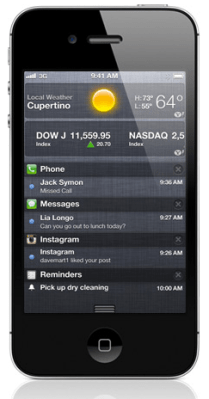If Apple was a melody and Samsung was a beat, their legal battle would be the song that never ends. On the whole, the war has lasted more than six months, spanned more than half the continents, and is still only in its formative stages. Final decisions have yet to be made in almost all of the cases, and in predictable fashion, the duo are igniting new battles at what feels like a daily rate. This time, Samsung is asking for some juicy deets in its Australian counter suit against Apple.
After Apple won a preliminary injunction on the Galaxy Tab 10.1, Samsung vowed to get more aggressive. And so they have, filing for a preliminary injunction against Apple’s brand new iPhone 4S. In doing so, Samsung has requested the source code for the iPhone 4S, as well as details on Apple’s subsidy deals with Australian carriers.
Samsung’s argument is that the iPhone 4S infringes three patents it holds, all concerned with 3G wireless technology and the transmission of mobile data. However, the patents in question are standard essentials patents, which means the technology they cover is a necessity industry-wide, rather than a specific brand innovation. In that case, Samsung is required to offer FRAND (Fair, Reasonable, and Non-Discriminatory) licensing terms, which, according to Samsung, Apple refused. Apple, on the other hand, says its covered by a third-party licensing agreement made by Qualcomm on the MDM6610 chipset, reports SmartOffice. Still, Samsung asserts that whatever licensing deal is in place may not extend into Australian turf.
In other words, this dueling duo can’t seem to get their licensing deals straight, or are at least doing a helluva job making it appear that way to the judge. Speaking of the judge, the same judge that ruled in the Apple vs. Samsung Galaxy Tab case is taking the reigns here: Judge Annabelle Bennett.
She listened this morning as Samsung counsel Cynthia Cochrane asked for the iPhone source code, along with subsidy agreement details in order to make a case for a sales ban. “If subsidies are given for the iPhone 4S, there are less to go around for my client’s products,” said Cochrane. Samsung is looking to get the subsidy numbers from Vodafone, Telstra and Optus, the three major carriers in Australia.
Meanwhile, Apple is looking for advice from counsel before agreeing to hand over the source code, which is a pretty solid idea. Who knows what infringing features Samsung will find in there?
In any case, this is much less of a blow to Apple than the Galaxy Tab sales ban is for Samsung. The iPhone 4S is “a horse [that has] already bolted,” according to Apple’s lawyers. The iPhone, in particular, tends to sell fast directly at launch, presumably because people want as much time as possible with the “new” iPhone before Apple tosses something better into the market. Plus, if you don’t move fast for a new Apple product, it usually sells out. Despite Samsung’s 4S sales publicity stunt, Apple lawyers are indeed correct in saying that the iPhone has already left the building, while the GalTab never even made it to shelves.
Past that, if Samsung can’t find any further infringement (should Apple offer up the source code), then the case will most likely result in FRAND licensing deals between Samsung and Apple. That is, if Apple’s Qualcomm deal doesn’t hold up. Summarily, Apple has more than a few lines of defense against this attack, and if Samsung wants more than a headache out of this, it’ll surely be an uphill battle.
The case will continue on Friday, November 4.

